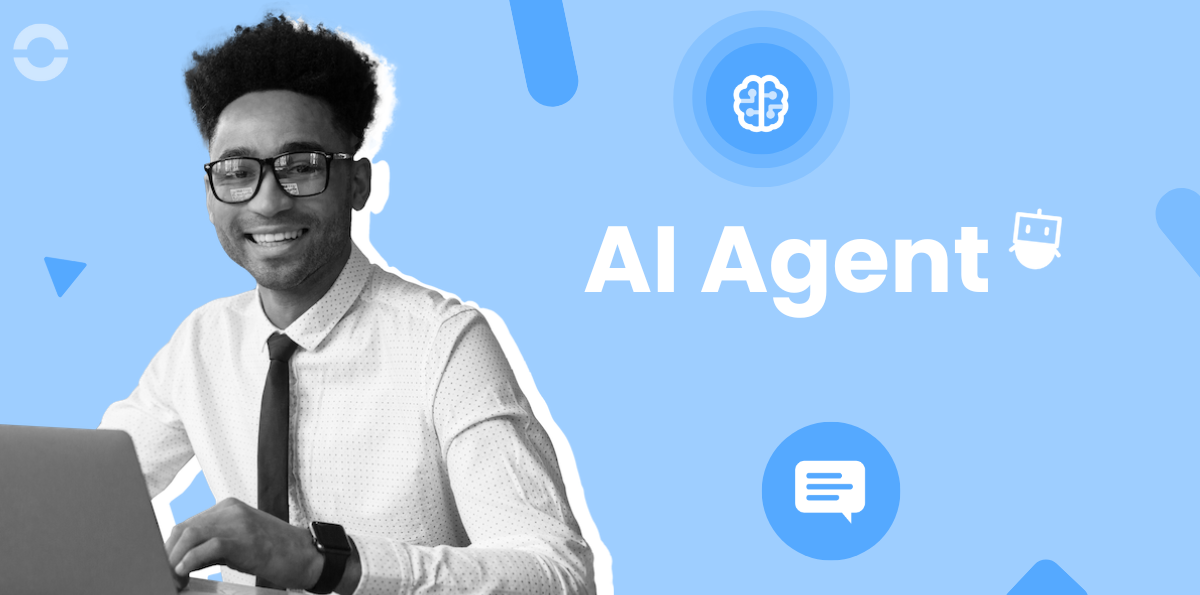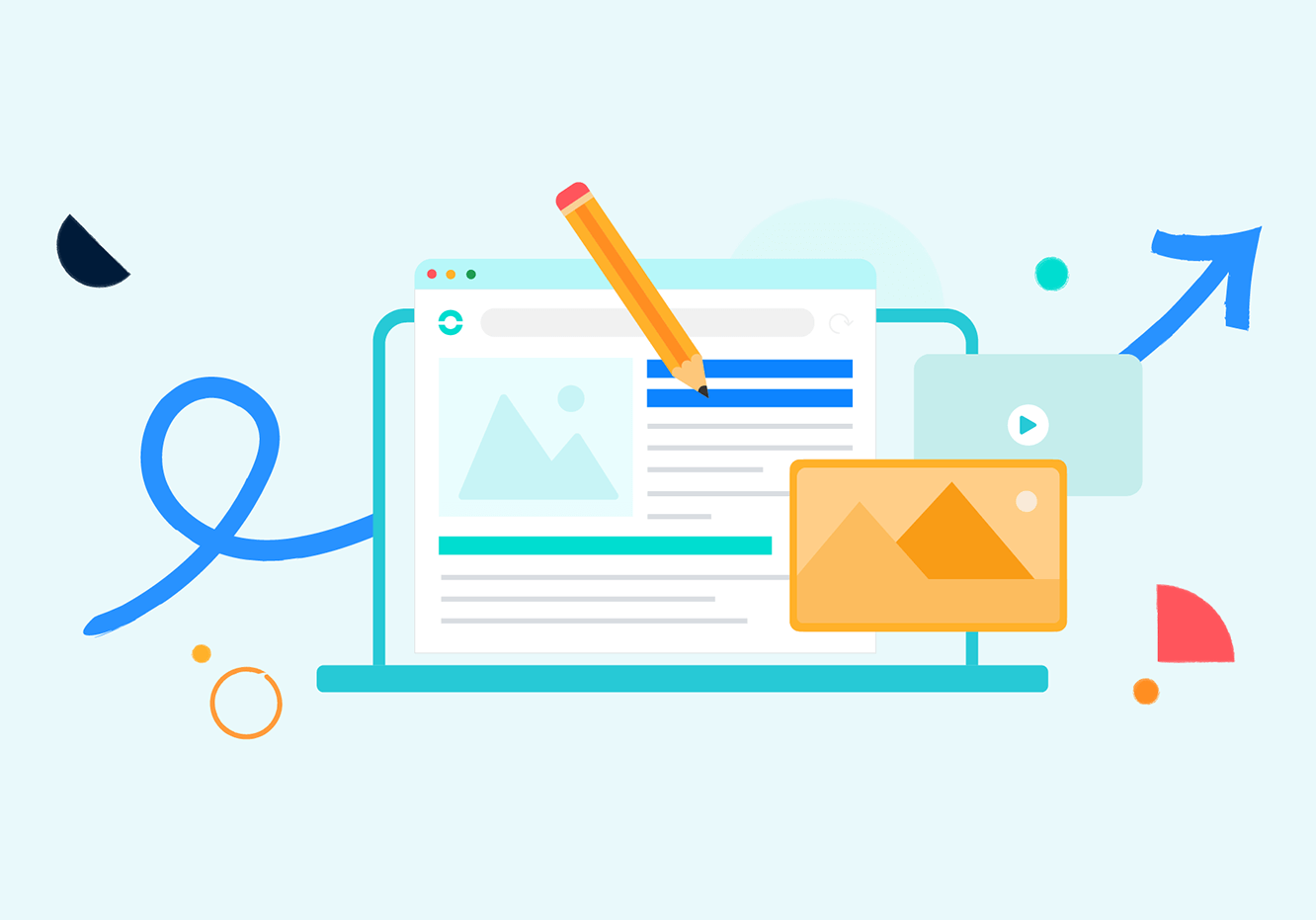Summary
As intelligent technologies become increasingly present in professionals' daily lives, a new concept is gaining ground: that of the AI agent. The term is widely used, but often remains vague. So, what does it really mean?
Learn More About Ringover's AI AgentWhat Is an Intelligent Agent?
An AI agent operates within a specific framework, with a defined goal and relies on AI capabilities to fulfill it. Unlike simple automation tools that execute programmed actions, the AI agent observes, interprets, acts—and sometimes adjusts its approach.
It senses signals from its environment, filters the information flow, identifies relevant content, and uses this input to decide on an action—all without requiring manual instructions.
Example: In a customer service setting, an AI agent might analyze incoming requests not only by reading the messages but also by considering the customer's history or even social media activity to detect what the raw text doesn't reveal.
Its real strength lies in machine learning. Every interaction becomes a learning opportunity. The agent observes reactions, detects patterns, adjusts its responses, and gradually refines its reasoning—like a team member gaining experience over time.
This adaptive dynamic allows AI agents to track shifts in usage, market evolution, or changing demand—without needing constant reconfiguration. They don't become “intelligent” by design, but through continuous real-world iteration.
How Do AI Agents Work?
AI agents follow a structured and methodical process. They come in several types depending on internal mechanisms, learning ability, or autonomy level. Understanding these differences is key to integrating them into an operational strategy. Let's break it down:
1. Define the Intent
First, the agent receives a specific instruction: a goal or expected result. This instruction, usually provided by a human, becomes the foundation of the agent's logic.
Rather than treating the goal as a single task, the agent breaks it down into distinct actions—allowing it to build a logical and actionable plan.
2. Gather Relevant Data
Once the goal is set, the agent begins collecting information—not just from static databases, but from varied, often dynamic sources.
This could include past transactions, client interactions, social media posts, or even data exchanges between other AI agents.
Some data may be outdated or poorly structured; advanced agents account for this. They process information in real time, using models that identify relevant signals and link them to the objective.
3. Execute, Adjust, Repeat If Needed
With the data in place, the agent moves into execution. Tasks are performed in a specific order or in response to defined events. While improvisation is limited, adaptation is allowed.
The agent constantly monitors the gap between expected and actual outcomes. If results deviate from the goal, it can course-correct automatically.
4. Analyze to Act
As it progresses, the agent uses machine learning models—trained on large data sets—to detect patterns, predict needs, and choose the best response based on context. This is exactly what we described earlier with the customer service example.
5. Adapt Over Time
What sets robust AI agents apart is not raw power but the ability to evolve. With each interaction, they learn—sometimes a detail, sometimes an unspoken rule.
This accumulated experience improves their internal models. It doesn't make them perfect—but more relevant, more efficient, and more attuned to dynamic business realities.
What Are the Different Types of AI Agents?
AI agents can be categorized based on their functionality and capabilities. Understanding each type helps in choosing the best agent for a specific task or workflow.
| Type | How It Works | Key Feature | Use Case |
|---|---|---|---|
| 1. Simple Reflex Agents | Always respond the same way to the same situation | No memory or context awareness | Stable, predictable environments |
| 2. Model-Based Reflex Agents | Use an internal model of the world | Remember past states | Supply chain inventory management |
| 3. Goal-Based Agents | Plan and act to reach a goal | Can reevaluate and adjust plans | Strategic assistants |
| 4. Utility-Based Agents | Choose the action with the highest utility | Make optimal decisions with multiple variables | Complex decision-making |
| 5. Learning Agents | Learn and evolve from experience | Adapt to changing environments | Fast-changing business needs |
| 6. Hierarchical Agents | Organized with top-down supervision | Coordinate tasks across levels | Complex, multi-step processes |
1. Simple Reflex Agents
Among the earliest forms of AI, these agents follow a basic rule: a specific situation always triggers the same response. They don't retain context or history. Their effectiveness depends on a stable environment with no surprises. They're efficient but limited.
2. Model-Based Reflex Agents
These agents incorporate an internal representation of their environment, giving them a memory of past states. This lets them adjust decisions based on previous events—such as adjusting stock levels based on projected demand in a supply chain.
3. Goal-Based Agents
Goal-based agents don't just react—they plan. They prioritize, reassess, and can navigate obstacles. They behave more like intelligent assistants, able to make strategic decisions rather than just following instructions.
4. Utility-Based Agents
Utility-based agents evaluate not just what can be done, but what should be done. Using a value scale, they always select the action that maximizes utility. Ideal for environments requiring trade-offs and optimal decision-making.
5. Learning Agents
These agents evolve through experience. They observe, correct, and adapt. In fast-changing business environments, they're invaluable—constantly improving even when starting with limited knowledge.
6. Hierarchical Agents
Organized in a top-down structure, these agents allow lower-level agents to execute while higher-level agents coordinate and manage the strategy. This layered system ensures goal alignment across the entire process.
An AI agent can automate responses to many customer queries, allowing your teams to focus on more complex and potentially rewarding cases. Get in touch to learn more about the possibilities of an intelligent agent!
What Is a Multi-Agent System?
A multi-agent system brings together multiple agents that interact to achieve a shared objective. This distributed intelligence model is ideal for managing fleets of vehicles, sensor networks, or large-scale automated customer support. Instead of a single brain, intelligence is distributed and cooperative.
Use Cases for AI Agents
AI agents are extremely versatile. Here are key applications:
Customer Service Assistance
AI agents can handle support tickets, answer FAQs, update accounts, and manage refunds. With natural language processing (NLP), they understand intent, respond with nuance, and even help defuse customer dissatisfaction.
Administrative Task Automation
They automate vital but time-consuming tasks like file management, appointment scheduling, and CRM updates. They can even handle ERP system inputs and adjust system settings based on customer needs.
Data Analysis & Decision-Making
Faced with overwhelming data, AI agents detect patterns, flag anomalies, and inform decisions using probability models or predefined rules. In finance, they detect fraud; in healthcare, they analyze medical data for better diagnosis.
Supply Chain Management
AI agents monitor and adapt to disruptions, from logistics delays to stock fluctuations. They can trigger restocking, reroute supply chains, or optimize flow between warehouses and distributors.
Social Media Interactions
AI agents manage client interactions on platforms like Twitter or Facebook—answering questions, resolving issues, and enhancing brand presence.
What Are the Benefits of AI Agents for Businesses?
Why are more companies embracing AI agents? Because when integrated effectively, they transform entire processes:
✅ Boost Productivity & Efficiency
By automating repetitive tasks, employees can focus on higher-value missions while agents handle data triage, requests, and workflow execution.
✅ Cut Operational Costs
AI agents reduce manual errors, wait times, and staffing requirements—leading to significant cost savings.
✅ Deliver Personalized, Consistent Customer Interactions
AI agents provide 24/7 support, retaining context and tailoring responses based on user profiles, history, and channel.
✅ Easy Integration & High Adaptability
AI agents typically integrate smoothly with existing systems. Their continuous learning ensures they remain effective in dynamic environments.
✅ Advanced Forecasting & Analytics
By analyzing massive data sets, AI agents surface insights and alerts that human analysts might miss, driving smarter, real-time decisions.
✅ Risk Management & Compliance
AI agents proactively monitor data to detect risks and alert teams, ensuring compliance and mitigating threats.
AI Agents: Talk to Our Experts Today
AI agents are not just automated tools—they're changing the way businesses operate, analyze, and make decisions. Their real-time learning and adaptability make them vital partners in fast-moving professional environments.
Whether you're looking to streamline customer service, optimize workflows, or leverage data better, AI agents are powerful enablers.
Want to explore how to integrate these technologies into your operations? Ringover's team is ready to help you implement AI solutions tailored to your needs.
👉 Contact our experts today to begin your transformation.
Published on July 7, 2025.


